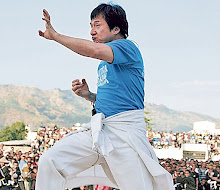
Squash is a racquet sport that is played indoor. Formerly it was known as "Squash rackets." The game is played by either two players or four players. The former is known as 'singles' and the later as 'doubles.' The equipments required in squash sport are rackets and a hollow rubber ball. It is played in a four-walled court. Traditionally the racquets were made of laminated timber with a small strung area using natural 'gut' strings. After mid 1980s, the rackets are made of composite materials or metals (graphite, kevlar, titanium, and/or boron) with synthetic strings. DO YOU KNOW The small coloured dots on the squash ball indicate the level of bounciness and hence, the standard of play it is suited for | The recognised colours and 'speeds' are as given below:
- Double Yellow - Extra Super slow
- Yellow - Super slow
- Green or White - slow
- Red - Medium
- Blue - Fast
|
- Formerly squash was known as "Squash rackets."
- The game originated in the 19th century at Harrow School, in London, England.
- It was a derivative of the game of Rackets.
- The first recorded construction of squash courts was at Harrow in the 1860s.
- Earlier courts of this sport were created at Harrow by sub-dividing a rackets court.
- USA became the first nation to form a dedicated association and codify its game in 1907.
SQUASH COURT The 'International' size court was codified in the 1920s. - 32 feet (9750 mm) long.
- 21 feet (6400 mm) wide.
- Front wall 'out' line 15 feet (4570 mm) above the floor.
- Back wall 7 feet (2130 mm) above the floor.
- Front wall 'service' line 6 feet (1830 mm) above the floor.
- Tin' (the equivalent of a net) 17 inches (430 mm) high surmounted by a 'board' a further 2 inches (50 mm) high.
|
|
SQUASH TIPS - The basic strategy of the sport is to hit the ball straight up the side walls to the back corners referred to as a straight drive, wall, or "length."
- Attacking with soft or "short" shots to the front corners, also known as 'drop shots,' causes the opponent to cover more of the court and may result in an outright winner.
- 'Angle' shots are used for deception and again to cause the opponent to cover more of the court.
- A too much skilled players sometimes attempt to finish rallies by hitting the ball at an angle onto the front wall and into an area known as the 'nick' i.e. the junction between the side wall and floor, which if done properly will cause the ball to roll out along the floor and be unreturnable.
- The ability to change the direction of the ball at the last moment is also important to off-balance the opponent.
SQUASH CHAMPIONSHIPS - World Open
- British Open Squash Championships
- World Doubles Squash Championships
- World Team Squash Championships
SQUASH ASSOCIATIONS IN INDIA |


0 comments:
Post a Comment